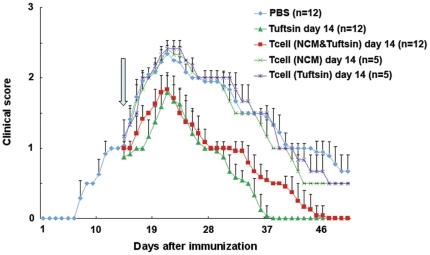Figure 4. Adoptive transfer of tuftsin and NCM modulated T cells on day 14 ameliorates established EAE.
Wild-type (WT) mice were injected with MOG35–55 peptide in CFA and pertussis toxin to induce EAE. Osmotic pumps filled with PBS or 500 µM tuftsin in PBS were implanted in the back of the mice on day 1 after MOG immunization. 5×106 T cells, modulated as follows: tuftsin/NCM-treated T cells; tuftsin-only treated T cells; NCM-only treated T cells, were injected intravenously into recipient C57BL/6 mice immunized with MOG 14 days after the onset of disease (arrow indicates timepoint when T cell transfer was performed) and the disease severity scored as described in Methods. (The experiment was repeated twice. Cumulative data are provided; total number of animals tested, n = 12/PBS-infused mice; n = 12/tuftsin-infused mice; n = 12/mice adoptively transferred with tuftsin plus NCM-modulated T cells; n = 5/mice adoptively transferred with tuftsin-only treated T cells; n = 5/mice adoptively transferred with NCM-only treated T cells). Statistical analysis was performed, as described in the Methods. All time points between tuftsin/NCM-treated T cells and PBS control were found to be significant (p<0.001) except for days 14–15, 34 and 41–44). All the timepoints between tuftsin alone and PBS were significant (p<0.001). No difference was evident between tuftsin and tuftsin/NCM-treated T cells.

